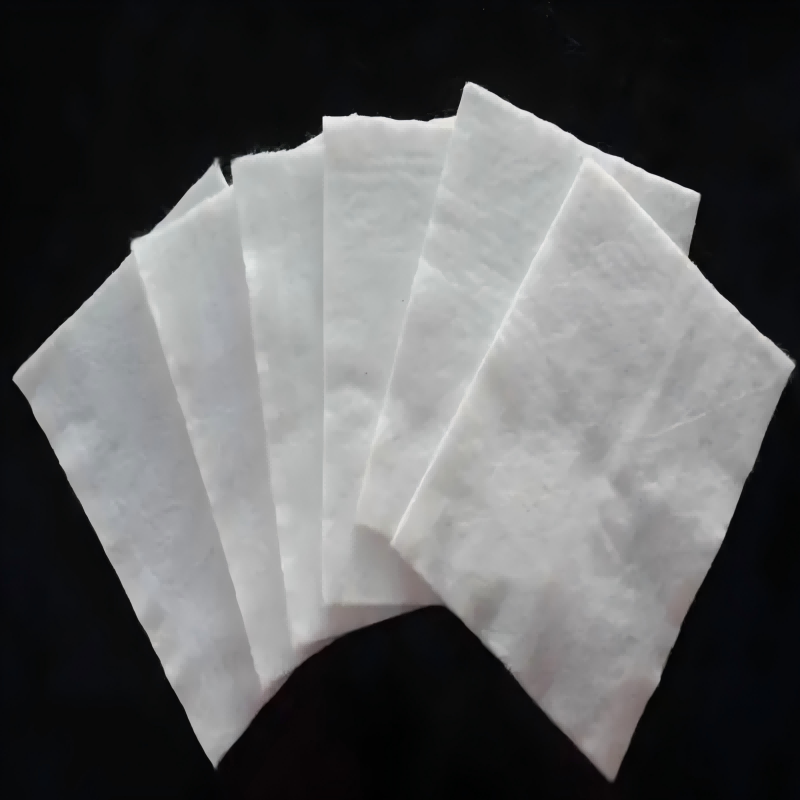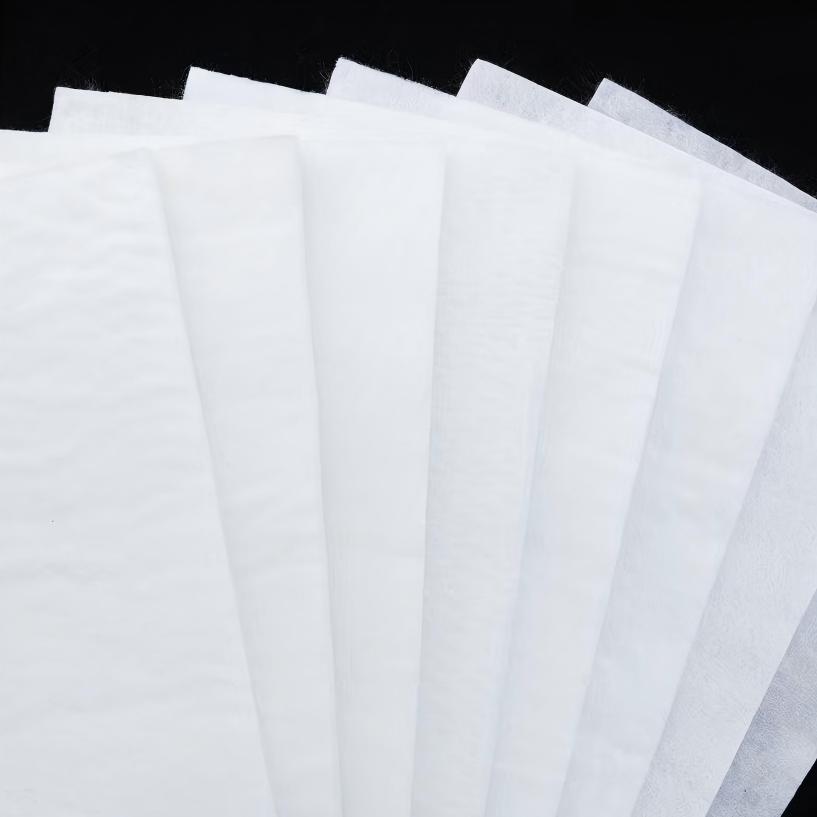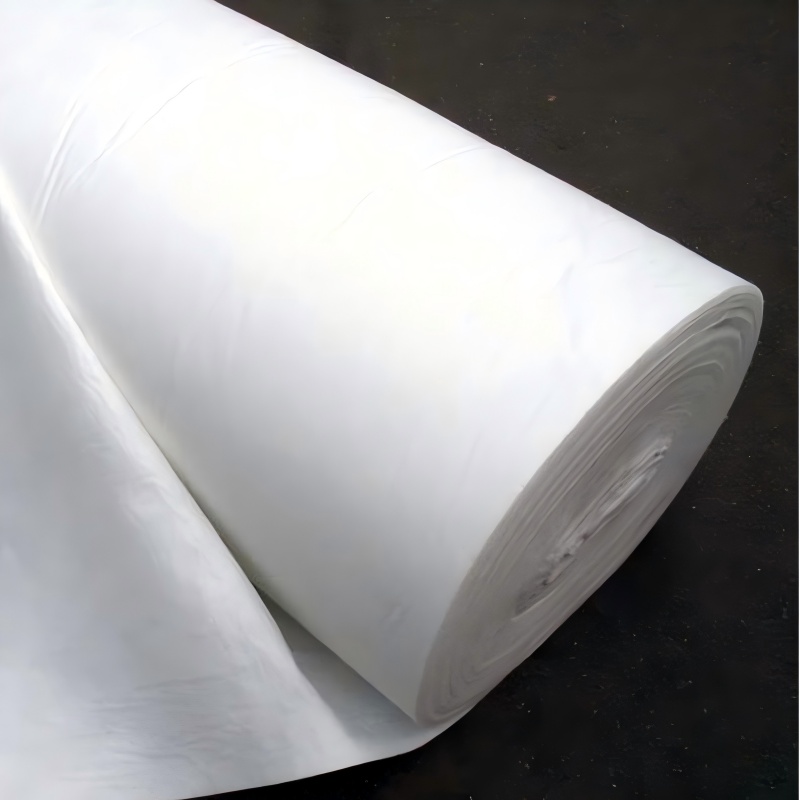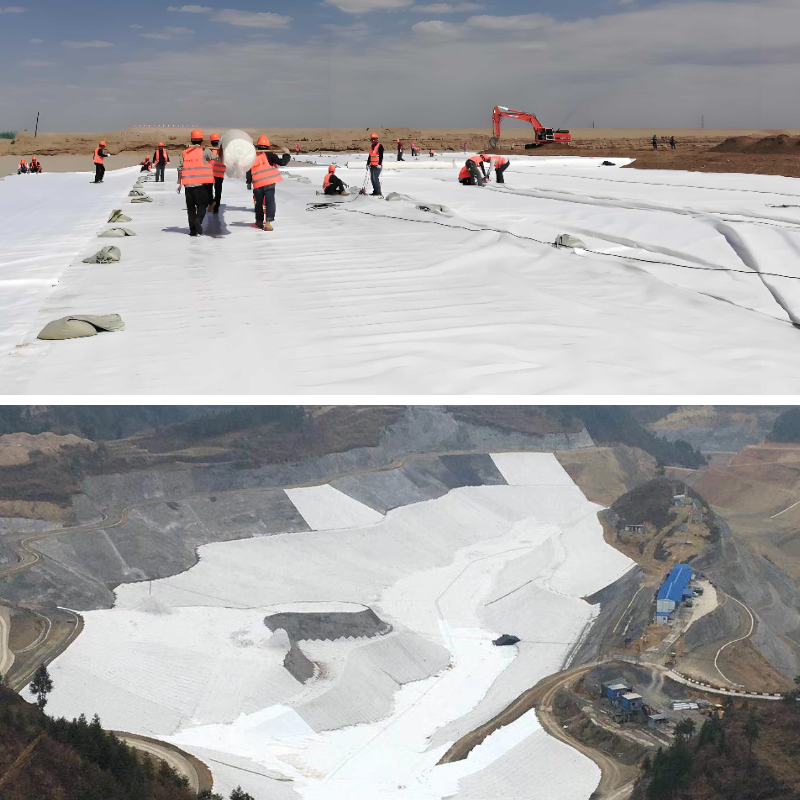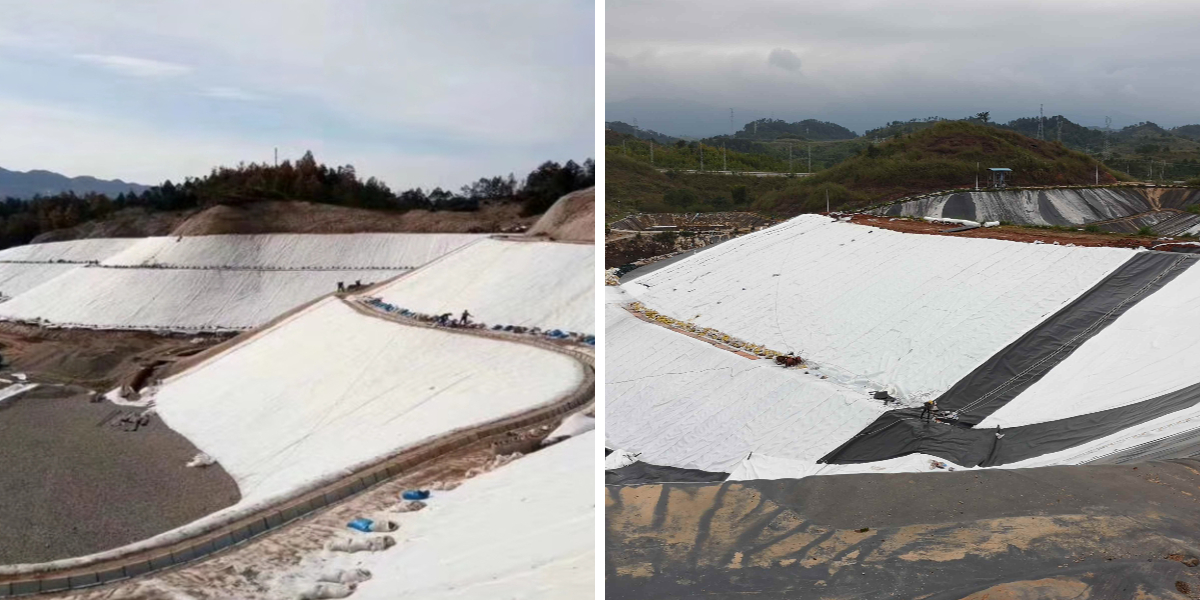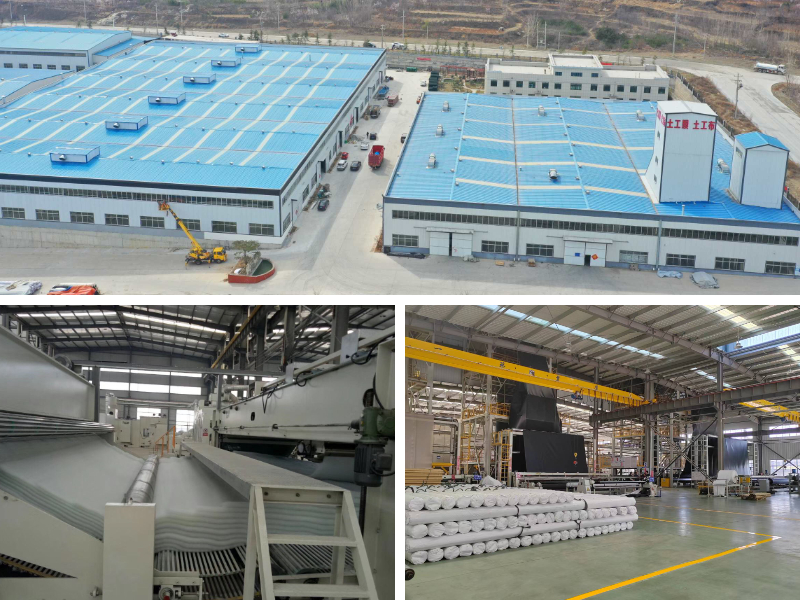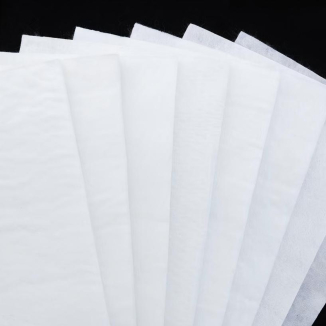Geotextile Fabric Under Pavers
1. Enhance foundation stability: disperse loads, improve soil bearing capacity, and prevent uneven settlement.
2. Isolation function: prevent mixing of different soil layers (such as roadbed and soft soil), and maintain material properties.
3. Filter drainage: Prevent soil erosion in the drainage system while ensuring smooth water flow.
4. Environmental Economy: Reduce the use of traditional materials such as sand and gravel, lower engineering costs, and minimize ecological damage.
5. Anti erosion: Used for slope protection, riverbank and other projects to effectively prevent soil erosion.
Product Introduction:
Geotextile Fabric Under Pavers is a permeable geosynthetic material made from synthetic fibers such as polyester (PET) and polypropylene (PP) through needle punching, weaving, or thermal bonding processes. Its finished product is in the form of cloth, with a width of usually 4-6 meters, a length of up to 50-100 meters, a maximum width of 9 meters, and a unit area mass of 100-1000 g/m ². According to different processes, geotextiles are divided into non-woven geotextiles (such as short fiber needle punched, long fiber spunbond) and woven geotextiles (such as woven fabrics). They can also be formed into fabric film composite geotextiles (such as one fabric, one film, two fabrics, one film) or multi-layer composite structures through composite processes.
characteristic
1. High strength and tensile strength
Plastic fibers endow geotextiles with sufficient strength and elongation in both dry and wet conditions, with tensile strength up to 2-3 times that of short fiber geotextiles (long fiber geotextiles), making them suitable for high stress scenarios such as steep slope reinforcement and retaining walls.
2. Corrosion resistance and aging resistance
It can be used for a long time in soil and water with different acidity and alkalinity. It has strong resistance to microorganisms and insect infestations, high temperature and freezing, and a service life of several decades.
3. Permeability and Filtration
The gaps between fibers allow water flow to pass through while intercepting sediment and fine particles, preventing soil erosion. For example, in the anti filter layer of a dam, long fiber geotextile can protect the dam structure from seepage damage.
4. Convenient and economical construction
The material is soft and easy to transport, cut, and lay, which can save more than 30% of material and labor costs. For example, the efficiency of laying isolation layers on highway roadbeds is much higher than that of traditional materials.
5. Environmental Protection and Sustainability
Made of recyclable synthetic fibers, non-toxic and odorless, reducing natural stone mining. Some new geotextiles have been made biodegradable, reducing post construction pollution.
Product Parameters:
project | metric | ||||||||||
Nominal strength/(kN/m) | |||||||||||
6 | 9 | 12 | 18 | 24 | 30 | 36 | 48 | 54 | |||
1 | Longitudinal and transverse tensile strength / (kN/m) ≥ | 6 | 9 | 12 | 18 | 24 | 30 | 36 | 48 | 54 | |
2 | Maximum elongation at maximum load in longitudinal and transverse directions/% | 30~80 | |||||||||
3 | CBR top penetration strength /kN ≥ | 0.9 | 1.6 | 1.9 | 2.9 | 3.9 | 5.3 | 6.4 | 7.9 | 8.5 | |
4 | Longitudinal and transverse tearing strength /kN | 0.15 | 0.22 | 0.29 | 0.43 | 0.57 | 0.71 | 0.83 | 1.1 | 1.25 | |
5 | Equivalent aperture O.90(O95)/mm | 0.05~0.30 | |||||||||
6 | Vertical permeability coefficient/(cm/s) | K× (10-¹~10-), where K=1.0~9.9 | |||||||||
7 | Width deviation rate /% ≥ | -0.5 | |||||||||
8 | Unit area mass deviation rate /% ≥ | -5 | |||||||||
9 | Thickness deviation rate /% ≥ | -10 | |||||||||
10 | Thickness coefficient of variation (CV)/% ≤ | 10 | |||||||||
11 | Dynamic perforation | Puncture hole diameter/mm ≤ | 37 | 33 | 27 | 20 | 17 | 14 | 11 | 9 | 7 |
12 | Longitudinal and transverse fracture strength (grab method)/kN ≥ | 0.3 | 0.5 | 0.7 | 1.1 | 1.4 | 1.9 | 2.4 | 3 | 3.5 | |
13 | Ultraviolet resistance (Xenon arc lamp method) | Longitudinal and transverse strength retention rate% ≥ | 70 | ||||||||
14 | Ultraviolet resistance (fluorescence UV lamp method) | Longitudinal and transverse strength retention rate% ≥ | 80 | ||||||||
Product Applications:
1. Transportation Engineering
Highway/railway subgrade: Separate soft soil layers from fillers to prevent material mixing and improve bearing capacity. For example, the permafrost area of the Qinghai Tibet Railway adopts geotextile isolation layer to effectively control frost heave and thaw settlement.
Slope protection: Short fiber needle punched geotextile covers the slope surface, combined with grass planting to achieve ecological slope stabilization and reduce soil erosion.
Airport runway: prevent foundation settlement and extend runway service life.
2. Water conservancy engineering
Dam anti filter layer: Long fiber geotextile is used as a filtering medium to protect the dam structure.
Drainage system: Three dimensional geotextile is buried in soft soil areas to guide groundwater discharge and prevent roadbed collapse.
Water well/relief well: serves as a filter layer to prevent wellbore collapse.
3. Environmental Protection Engineering
Landfill site: Composite geotextile is used to construct anti-seepage barriers to prevent pollutants from seeping into groundwater.
Sewage treatment tank: anti-seepage auxiliary, protecting surrounding soil and water bodies.
Ecological restoration: Cover polluted soil with short fiber cloth, isolate harmful substances, and promote vegetation restoration.
4. Municipal and Agricultural Affairs
Green belt weed prevention: Geotextile inhibits weed growth and reduces pesticide use.
Underground garage roof drainage: Permeable geotextile enhances rainwater infiltration and storage capacity.
Farmland drainage ditch: prevent soil erosion and improve irrigation efficiency.
5. Family and emergency scenarios
Garden weed prevention: laid on the soil surface, breathable and permeable, and suppresses weeds.
Emergency response for roof leakage: temporarily cover the leakage point and guide rainwater drainage.
Moving and storage: Fragile items in packages are scratch resistant and placed at the bottom of the carriage to prevent slipping.
Geotextile, as a high-performance geosynthetic material, has become an indispensable key material in modern civil engineering due to its multifunctionality, economy, and environmental friendliness. With the development of material technology, its performance will be further optimized and its application fields will continue to expand.


